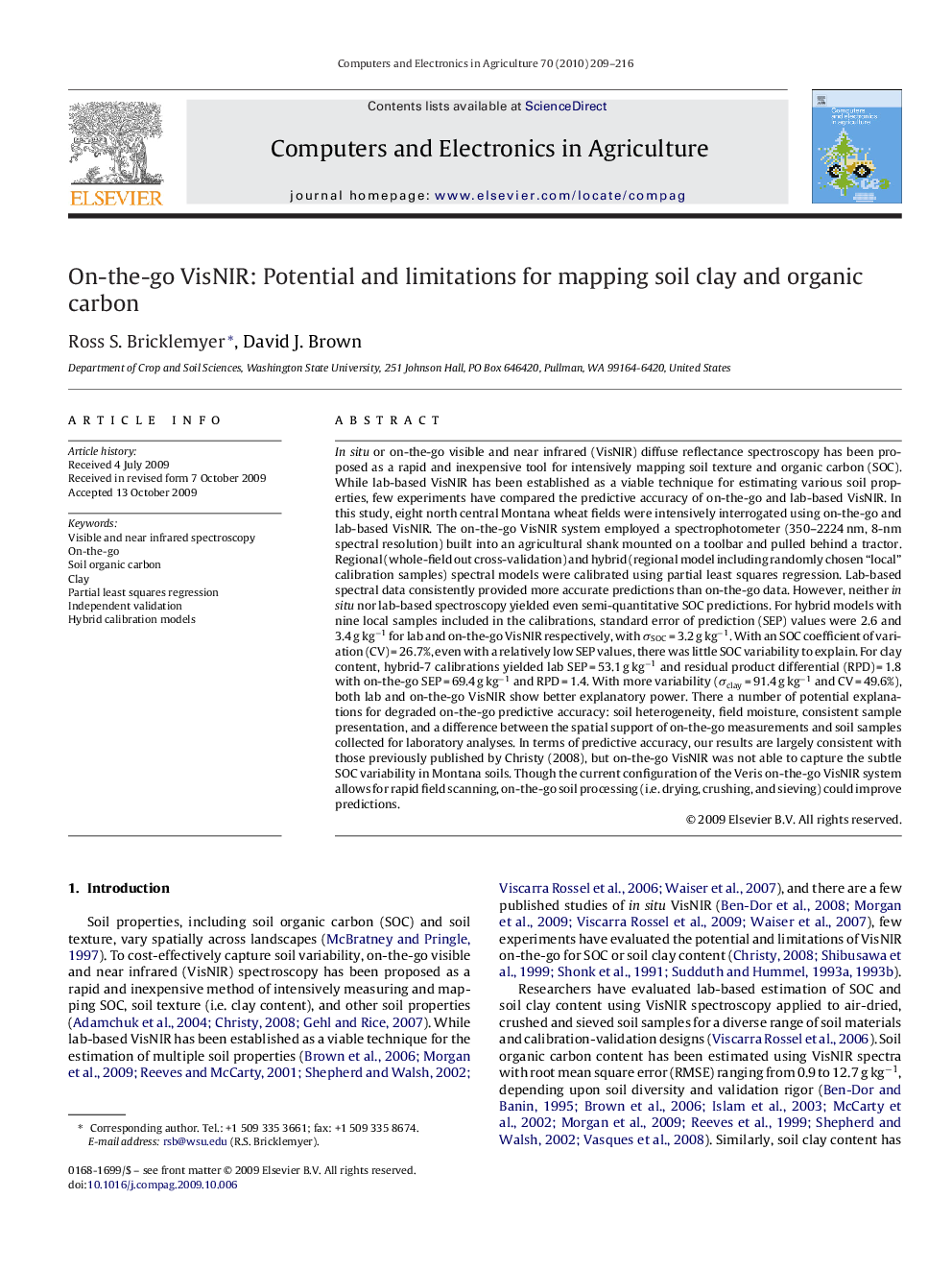| Article ID | Journal | Published Year | Pages | File Type |
|---|---|---|---|---|
| 84935 | Computers and Electronics in Agriculture | 2010 | 8 Pages |
In situ or on-the-go visible and near infrared (VisNIR) diffuse reflectance spectroscopy has been proposed as a rapid and inexpensive tool for intensively mapping soil texture and organic carbon (SOC). While lab-based VisNIR has been established as a viable technique for estimating various soil properties, few experiments have compared the predictive accuracy of on-the-go and lab-based VisNIR. In this study, eight north central Montana wheat fields were intensively interrogated using on-the-go and lab-based VisNIR. The on-the-go VisNIR system employed a spectrophotometer (350–2224 nm, 8-nm spectral resolution) built into an agricultural shank mounted on a toolbar and pulled behind a tractor. Regional (whole-field out cross-validation) and hybrid (regional model including randomly chosen “local” calibration samples) spectral models were calibrated using partial least squares regression. Lab-based spectral data consistently provided more accurate predictions than on-the-go data. However, neither in situ nor lab-based spectroscopy yielded even semi-quantitative SOC predictions. For hybrid models with nine local samples included in the calibrations, standard error of prediction (SEP) values were 2.6 and 3.4 g kg−1 for lab and on-the-go VisNIR respectively, with σSOC = 3.2 g kg−1. With an SOC coefficient of variation (CV) = 26.7%, even with a relatively low SEP values, there was little SOC variability to explain. For clay content, hybrid-7 calibrations yielded lab SEP = 53.1 g kg−1 and residual product differential (RPD) = 1.8 with on-the-go SEP = 69.4 g kg−1 and RPD = 1.4. With more variability (σclay = 91.4 g kg−1 and CV = 49.6%), both lab and on-the-go VisNIR show better explanatory power. There a number of potential explanations for degraded on-the-go predictive accuracy: soil heterogeneity, field moisture, consistent sample presentation, and a difference between the spatial support of on-the-go measurements and soil samples collected for laboratory analyses. In terms of predictive accuracy, our results are largely consistent with those previously published by Christy (2008), but on-the-go VisNIR was not able to capture the subtle SOC variability in Montana soils. Though the current configuration of the Veris on-the-go VisNIR system allows for rapid field scanning, on-the-go soil processing (i.e. drying, crushing, and sieving) could improve predictions.
